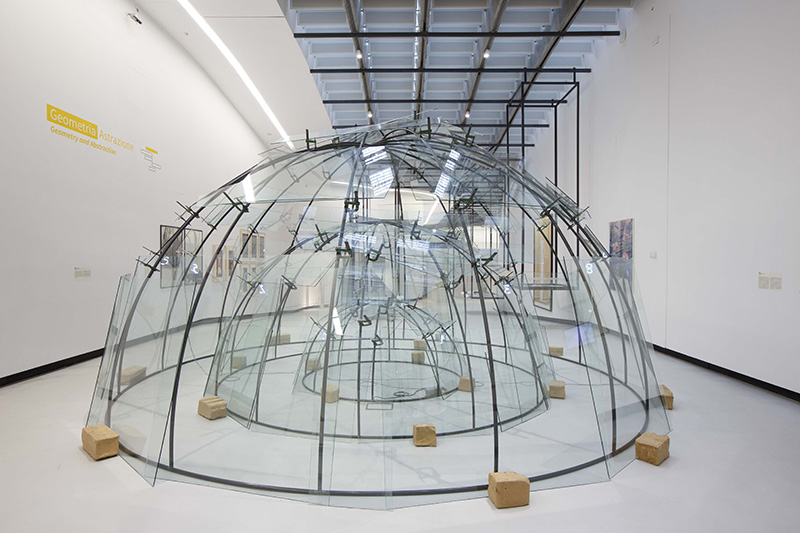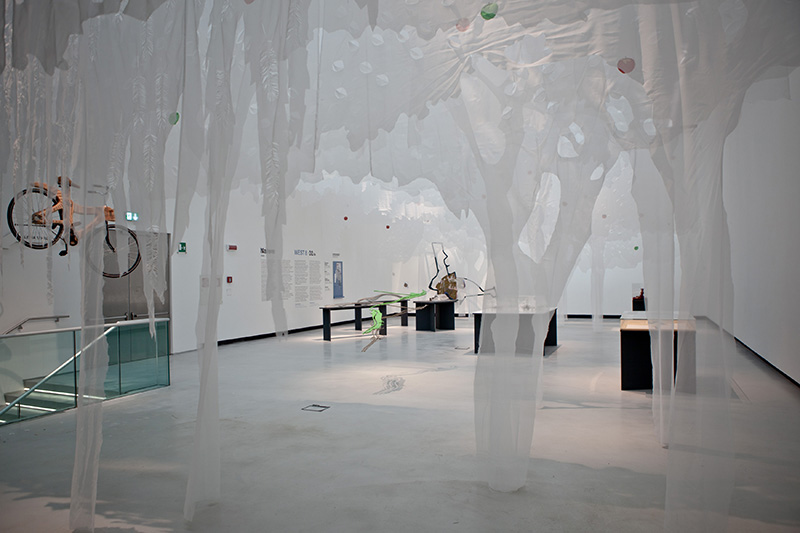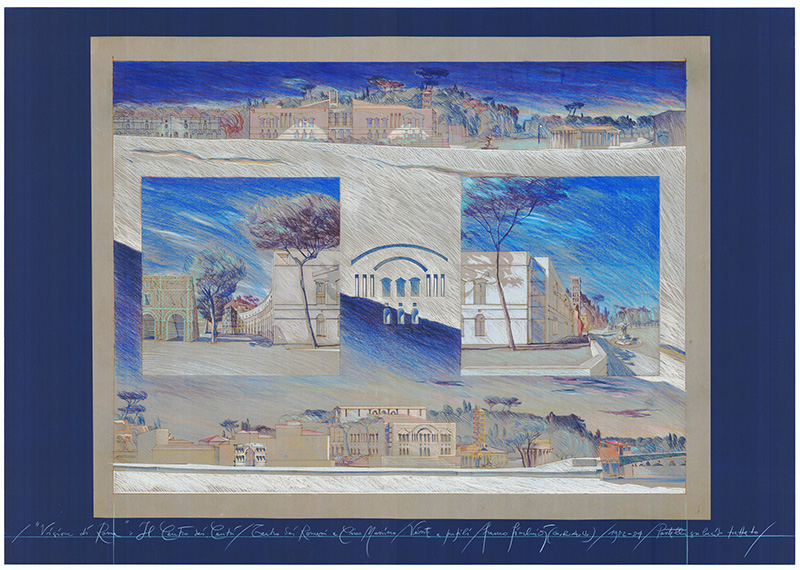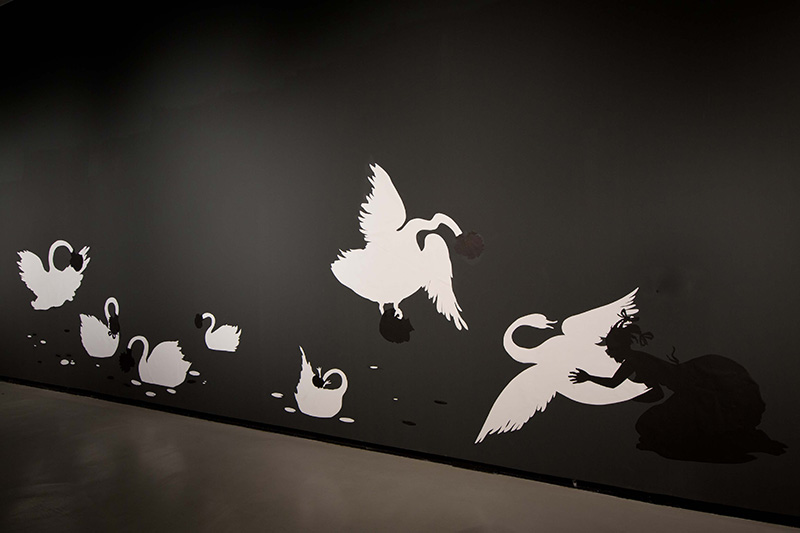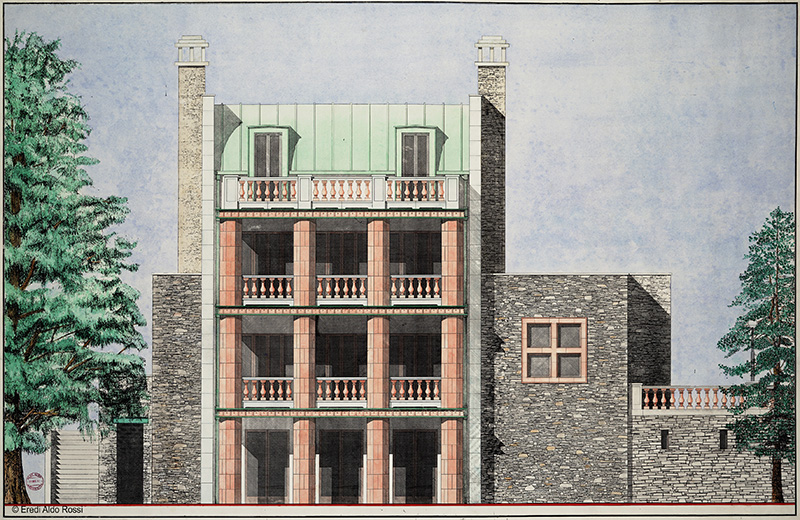ART-TRIBUTE:The Place To Be,Part III
 MAXXI Museum is reconfiguring and tripling the spaces devoted to its permanent Collections, reinforcing its identity and its public mission, starting with “The Place to Be”, the new hang of the permanent collection around which rotate all the changes and innovations. The presentation of the collection begins in the museum piazza (Part I, Part II)
MAXXI Museum is reconfiguring and tripling the spaces devoted to its permanent Collections, reinforcing its identity and its public mission, starting with “The Place to Be”, the new hang of the permanent collection around which rotate all the changes and innovations. The presentation of the collection begins in the museum piazza (Part I, Part II)
By Efi Michalarou
Photo: MAXXI Archive
MAXXI is becoming ever more welcoming, more accessible and more open to the city, with the whole of the ground floor free of charge and new services for the public. The ground floor entry is free from Tuesday to Friday and every 1st Sunday of the month The offer is completed by a new cafeteria-bookshop facing onto Via Guido Reni and a new restaurant on Piazza Alighiero Boetti, with the collaboration of a Michelin star chef. Piazza Alighiero Boetti features 3 the large-scale new installations: “Winter Moon”, by Ugo Rondinone an aluminium casting of a millennial olive, 5 metres tall and finished in matte white enamel. “Anima” by Mircea Cantor is a majestic skeleton in wood and rope, around 8 metres tall and 10 metres long, inspired by St. Peter’s Basilica stripped back to its bare essentials and “MareoMerz” by Elisabetta Benassi was instead created in 2013 for her solo show at the Fondazione Merz: a full size fishing boat nets the last car to belong to Mario Merz. In the ground floor of the Museum , the exhibition begins in the space devoted to the heart of MAXXI’s documentary collections, the Archive of the Incontri Internazionali d’Arte, facing Gallery 1 where 60 works of art, architecture and photography from the ‘60s through to the most recent period dialogue amongst themselves and with the s spaces of Zaha Hadid. Among others are on presentation: the monumental wall drawing “#1153 Ripples” by Sol Lewitt, “Elica Milano” by Carl Andre, “Assioma-Otto proposizioni” by Vincenzo Agnetti, the installation “Flying Garden/Air-Port-City” by Tomas Saraceno, Mario Merz’s “Senza titolo (Triplo Igloo)”, “The Emancipation Approximation” by Kara Walker and “Orme I” and “Orme II” by Alighiero Boetti. Among the architectural works, on show for the first time are the projects for the Naples metro stations by among others Dominique Perrault and Álvaro Siza,. And the 46 photographs that make up “72 Hours in Rome” by Helmut Newton, his only “urban landscape” photographic project. The itinerary continues in the Archives Centre with the project entitled Interiors: 10 architects and studios featured in the MAXXI Architettura collections, including Aldo Rossi, Carlo Scarpa and OBR, represent through projects and words the rooms of our daily lives. The exhibition continues on the first floor, in Gallery 2 and the new hall dedicated to Claudia Gian Ferrari who, in 2010, donated an important selection of works from her personal Collection to the museum. The overall reconfiguration of the museum spaces also features a permanent video gallery which is launching with the “ArTapes” project curated by Giulia Ferracci, a programme of screenings dedicated to the most interesting historical and more recent artist videos.
Info: Curators: Margherita Guccione and Bartolomeo Pietromarchi, MAXXI National Museum of XXI Century Arts, Via Guido Reni 4 A, Rome, Duration: 5/5/17- , Days & Hours: Tue-Fri & Sun 111:00-19:00, Sat 11:00-22:00, www.fondazionemaxxi.it

